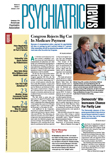The National Library of Medicine in Bethesda, Md., is the largest medical library in the world. It had its beginnings in the early 1800s when Army medical officers received a few medical books to assist them.
Over the years, U.S. surgeons general continued the practice and accumulated a small collection of medical books in their offices. The major impetus to the growth of the library followed the 1865 appointment of an Army assistant surgeon, John Shaw Billings (1838–1913), who had served in the Civil War, to oversee the growing collection. Billings procured books and other medical publications from domestic and foreign sources and compiled catalogs and bibliographies for public use. He sent out requests for medical publications worldwide, which resulted in thousands of medical reprints of published articles being received. Most came from the United States, Great Britain, France, Germany, and Italy, but other countries were also represented. The Army Medical Library became the National Library of Medicine in 1956, and those early reprints are now stored in the Bethesda library.
The reprints are being screened using the book Morton's Medical Bibliography, an annotated list now in its fifth edition, illustrating the history of medicine. Reprints and authors listed in the book are being catalogued to be placed in the library collection. The reprints, in the main, cover the period 1850–1900.
The collection includes reprints of psychiatric subjects, many of which were published in the American Journal of Insanity (AJI, now the American Journal of Psychiatry). Isaac Ray, one of the founders of the Association of Medical Superintendents of American Institutions for the Insane (AMSAII) and the foremost forensic psychiatrist of his time, contributed a reprint titled “Confinement of the Insane” (American Law Review, 1869); John P. Gray, superintendent of Utica (N.Y.) State Hospital and editor of AJI for 32 years, published an article on heredity (AJI, 1884); Thomas Kirkbride, also a founder of the AMSAII, and creator of the plan that was followed in the construction of most public mental hospitals of the 19th century, wrote a memoir of Ray after his death (Pa. Transactions, 1881); Edward Cowles, superintendent of the McLean Mental Hospital in Massachusetts, published an article titled “Insistent and Fixed Ideas” (American Journal of Psychology, 1880); Henry Hurd, superintendent of Eastern Michigan State Hospital in Pontiac and later first superintendent of the John Hopkins Hospital in Baltimore, wrote “A Plea for Systematic Therapeutical Clinical and Statistical Study” (AJI, 1881); Edward Jarvis, the first psychiatrist-epidemiologist and consultant to the U.S. Census Bureau, published “Immigration in the U.S.” (Atlantic Monthly, 1874).
Women psychologists and psychiatrists are also represented. Jennie McCowen, assistant physician at the State Hospital in Mount Pleasant, Iowa, and a former president of the Scott County Medical Society, wrote “On Insanity in Women” (Iowa Medical Society Transactions, 1886); Alice Bennett, one of the first women in the United States to obtain a Ph.D. and superintendent of Norristown (Pa.) State Hospital, published “Periodic Insanity” (Medical Legal Journal, 1888); Mary Putnam Jacobi wrote “The Prophylaxis of Insanity” (Archives of Medicine, 1881).
Neurologists of the period who considered themselves qualified to treat psychiatric conditions were bitterly critical of AMSAII and the superintendents and published many articles on psychiatric subjects. William Hammond, a Civil War surgeon general and founder and president of the American Neurological Association, wrote “The Non-Asylum Treatment of the Insane” (Transaction of the New York Medical Society, 1879); George Beard, a New York neurologist and coiner of the term“ neurasthenia,” wrote “On Certain Symptoms of Nervous Exhaustion” (Virginia Medical Monthly, 1878); Edouard Seguin, a French émigré and authority on education of“ feebleminded” children, wrote four pamphlets on lunacy reform (Archives of Medicine, 1880), and S. Weir Mitchell, an American Neurological Association president, delivered a scathing article on the members of AMSAII at their annual meeting in 1894 (AJI, 1894).
Morton's book lists 12 annotations for S. Weir Mitchell, seven for Benjamin Rush, two for Isaac Ray, one for Henry Hurd, one for Hammond, three for Beard, one for Seguin. Few other American psychiatrists are cited. ▪
